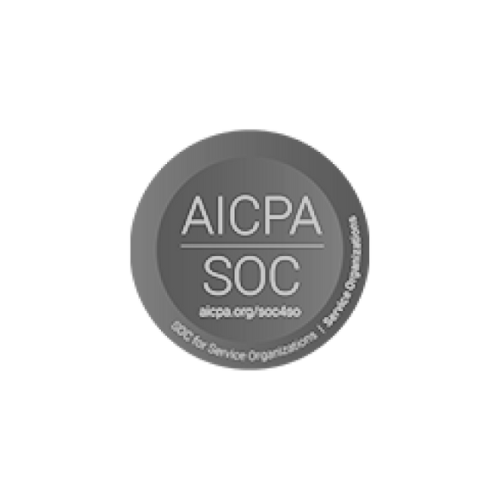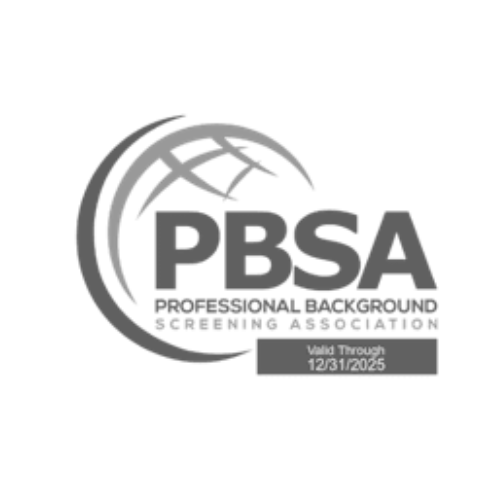The phone call came at 7:30 AM on a Monday. The chief nursing officer was calling because their weekend shift supervisor had just discovered that one of their ICU nurses had been working with an expired license for three months. The state licensing board had suspended the license due to unpaid continuing education requirements, but somehow the hospital’s verification system had missed it.
The immediate crisis was manageable—they could reassign the nurse to non-clinical duties while the license issue was resolved. But the deeper problem was more troubling. If their system had missed this license suspension, what else might they be missing? How many other compliance gaps existed in their verification processes?
This scenario plays out in healthcare organizations across the country every week. The complexity of healthcare hiring compliance has grown exponentially in recent years, with new regulations, evolving standards, and increased scrutiny from regulatory bodies. What used to be a straightforward process of checking licenses and references has become a maze of federal requirements, state regulations, and industry-specific standards that can overwhelm even experienced HR professionals.
The stakes couldn’t be higher. Healthcare organizations that fail to maintain proper hiring compliance face regulatory penalties, legal liability, and most importantly, risks to patient safety. Yet many organizations are struggling to keep up with the pace of change in compliance requirements while maintaining efficient hiring processes.
The Expanding Universe of Healthcare Compliance
Healthcare hiring compliance in 2025 involves far more than the basic license verification and background checks that were sufficient a decade ago. Today’s requirements span multiple federal agencies, state regulatory bodies, and industry-specific standards that can vary significantly based on the type of healthcare organization, the roles being filled, and the populations being served.
The Office of Inspector General exclusion list check, once a simple monthly review, now requires real-time monitoring and immediate response protocols. Professional license verification has evolved from annual checks to continuous monitoring systems that track not just expiration dates but also disciplinary actions, continuing education compliance, and multi-state licensing agreements.
Drug testing requirements have become more sophisticated, with some organizations implementing ongoing random testing programs and others adding testing for synthetic drugs that weren’t covered by traditional panels. Background check requirements now often include child abuse registry searches, elder abuse registry checks, and specialized databases that track healthcare-specific violations.
The challenge is that these requirements continue to evolve rapidly. New regulations emerge regularly, existing requirements are modified or expanded, and enforcement priorities shift based on emerging risks and political priorities. Healthcare organizations that built their compliance programs around 2020 requirements may find themselves significantly out of compliance with 2025 standards.
Understanding the Regulatory Landscape
Federal healthcare hiring compliance requirements come from multiple agencies with overlapping jurisdictions and sometimes conflicting priorities. The Centers for Medicare & Medicaid Services sets standards for organizations that participate in federal healthcare programs. The Office of Inspector General maintains exclusion lists and investigates healthcare fraud. The Drug Enforcement Administration regulates access to controlled substances. The Department of Health and Human Services oversees various patient safety and privacy requirements.
State requirements add another layer of complexity, with each state maintaining its own licensing boards, regulatory standards, and enforcement priorities. Some states have reciprocity agreements that allow licensed professionals to work across state lines, while others require separate licensing processes for each jurisdiction. Some states have implemented enhanced background check requirements for healthcare workers, while others rely on federal standards.
Professional organizations and accrediting bodies add yet another layer of requirements. The Joint Commission, the National Committee for Quality Assurance, and various specialty accrediting organizations all have their own standards for healthcare worker verification and ongoing monitoring. These standards often exceed regulatory minimums and may be required for organizations seeking accreditation or participating in certain programs.
The result is a complex web of requirements that can be difficult to navigate even for organizations with dedicated compliance resources. Smaller healthcare organizations, in particular, often struggle to maintain current knowledge of all applicable requirements while managing their day-to-day hiring needs.
The Hidden Costs of Compliance Failures
Healthcare hiring compliance failures can be extraordinarily expensive, both in direct costs and indirect consequences. Regulatory penalties for compliance violations have increased significantly in recent years, with some organizations facing fines in the hundreds of thousands of dollars for systematic verification failures.
Legal liability represents another significant cost category. Healthcare organizations can face negligent hiring claims if they fail to conduct appropriate background checks and an employee subsequently harms a patient. These claims can result in substantial financial judgments and can be particularly damaging to an organization’s reputation and ability to attract patients and staff.
The operational costs of compliance failures often exceed the direct financial penalties. Discovering that multiple employees have compliance issues may require extensive remediation efforts, including re-screening entire departments, implementing new verification systems, and providing additional training to HR staff and hiring managers.
Perhaps most significantly, compliance failures can result in exclusion from federal healthcare programs, which can be financially devastating for organizations that rely heavily on Medicare and Medicaid reimbursements. Even temporary exclusions can create cash flow problems that threaten an organization’s viability.
The reputational damage from high-profile compliance failures can have long-lasting effects on an organization’s ability to attract patients, recruit staff, and maintain community trust. In today’s connected world, news of compliance violations spreads quickly and can be difficult to overcome.
Building Robust Verification Systems
Effective healthcare hiring compliance requires systematic approaches that can handle the complexity of current requirements while adapting to future changes. The most successful organizations are building verification systems that go beyond basic compliance checklists to create comprehensive risk management frameworks.
The foundation of any robust verification system is a clear understanding of all applicable requirements for each type of position. This sounds straightforward, but many organizations discover gaps in their knowledge when they conduct comprehensive compliance audits. Requirements can vary significantly based on job duties, patient populations served, and organizational characteristics.
Once you understand the requirements, the next step is developing systematic processes for meeting them consistently. This typically involves creating detailed verification protocols for each type of position, implementing quality control measures to catch errors before they become compliance violations, and establishing ongoing monitoring systems to detect changes in employee status or regulatory requirements.
Technology plays an increasingly important role in healthcare verification systems. Automated license monitoring services can track expiration dates and disciplinary actions across multiple states and professions. Integrated background check platforms can streamline the process of conducting multiple types of verification while maintaining comprehensive audit trails.
However, technology should enhance rather than replace human oversight in healthcare verification. The complexity of healthcare compliance requirements often requires professional judgment to interpret results, resolve discrepancies, and make appropriate hiring decisions. Organizations that rely too heavily on automated systems without adequate human oversight often discover compliance gaps that could have been prevented with proper review processes.
Specialized Verification Requirements
Healthcare organizations face numerous specialized verification requirements that don’t apply to other industries. OIG exclusion list checks must be conducted before hiring and repeated regularly throughout employment. These checks require access to multiple databases and careful attention to name variations and aliases that might indicate excluded individuals.
Professional license verification in healthcare is particularly complex because many healthcare workers hold multiple licenses, certifications, or registrations that may be issued by different agencies with different renewal schedules and requirements. Nurses might hold licenses in multiple states, physicians might have both state medical licenses and federal DEA registrations, and allied health professionals might have certifications from multiple professional organizations.
Clinical privilege verification adds another layer of complexity for organizations that employ physicians and other advanced practitioners. This process involves verifying not just basic licensing but also specific training, experience, and competency in particular procedures or specialties. The verification process often requires detailed reference checks with previous employers and review of malpractice history and disciplinary actions.
Drug testing in healthcare often involves more stringent requirements than other industries, with some organizations implementing pre-employment testing, random ongoing testing, and for-cause testing protocols. The specific drugs tested for and the frequency of testing may be dictated by regulatory requirements, accreditation standards, or organizational policies.
Background check requirements for healthcare workers often include specialized databases and registries that aren’t relevant for other industries. Child abuse registries, elder abuse registries, and healthcare-specific exclusion lists all require separate verification processes with different agencies and databases.
Ongoing Monitoring and Maintenance
Healthcare hiring compliance doesn’t end with the initial verification process. Ongoing monitoring is essential because licenses can expire, disciplinary actions can occur, and regulatory requirements can change after someone is hired. Many compliance violations occur not because initial verification was inadequate, but because ongoing monitoring failed to detect changes in employee status.
License monitoring systems should track not just expiration dates but also disciplinary actions, continuing education compliance, and changes in licensing status. Some states now require healthcare organizations to report disciplinary actions taken against their employees, creating additional compliance obligations that must be managed systematically.
OIG exclusion list monitoring must be conducted regularly throughout employment, not just at the time of hire. The OIG updates its exclusion lists monthly, and healthcare organizations are expected to check their employees against these updated lists and take immediate action if any matches are found.
Professional certification monitoring is important for roles that require ongoing certification maintenance. Many healthcare certifications require continuing education, periodic re-examination, or other maintenance activities that must be completed to maintain valid certification status.
The challenge of ongoing monitoring is developing systems that can track multiple requirements for multiple employees across different professions and specialties. Manual tracking systems quickly become unwieldy as organizations grow, making technology solutions increasingly important for maintaining compliance.
Managing Multi-State Licensing
Healthcare organizations that operate in multiple states or employ workers who are licensed in multiple jurisdictions face additional compliance challenges. Each state has its own licensing requirements, renewal schedules, and disciplinary processes that must be tracked and managed separately.
Interstate licensing compacts have simplified some aspects of multi-state practice, but they also create new compliance obligations. Organizations must understand which states participate in various compacts, what the requirements are for practicing under compact privileges, and how to verify and monitor compact-based practice authority.
Telemedicine and remote healthcare delivery have created new multi-state licensing challenges as healthcare workers provide services across state lines through technology platforms. Organizations must ensure that their remote healthcare workers are properly licensed in all states where they provide services and that they maintain current knowledge of changing telemedicine regulations.
The administrative burden of managing multi-state licensing can be substantial, particularly for organizations with large numbers of healthcare workers or those that operate in many different states. Centralized tracking systems and automated monitoring tools become essential for maintaining compliance while managing administrative costs.
Technology Solutions for Healthcare Compliance
Modern technology offers numerous tools for streamlining healthcare hiring compliance while improving accuracy and reducing administrative burden. Automated license verification systems can check multiple databases simultaneously and provide real-time updates when license status changes occur.
Integrated background check platforms designed specifically for healthcare can streamline the process of conducting multiple types of verification while ensuring that all required checks are completed. These platforms often include built-in compliance checklists and audit trails that help demonstrate compliance with regulatory requirements.
Credential management systems can track multiple types of licenses, certifications, and other credentials for large numbers of employees while providing automated alerts for upcoming expirations or required maintenance activities. These systems can significantly reduce the administrative burden of ongoing compliance monitoring.
However, technology solutions must be carefully selected and implemented to ensure they meet the specific needs of healthcare organizations. Generic background check platforms may not include all the specialized databases and verification processes required for healthcare compliance. Organizations should carefully evaluate technology solutions to ensure they provide comprehensive coverage of applicable requirements.
Training and Education for Compliance Success
Effective healthcare hiring compliance requires ongoing training and education for HR staff, hiring managers, and other personnel involved in the verification process. The complexity of healthcare compliance requirements means that even experienced professionals need regular updates on changing regulations and best practices.
Training programs should cover not just the technical requirements of various verification processes but also the underlying rationale for these requirements and the potential consequences of compliance failures. Staff who understand why certain verification steps are important are more likely to complete them thoroughly and accurately.
Regular compliance audits and reviews can help identify training needs and ensure that verification processes are being followed consistently. These audits should examine both the technical accuracy of verification activities and the completeness of documentation and record-keeping.
Professional development opportunities, such as conferences, webinars, and certification programs, can help compliance staff stay current with evolving requirements and best practices. Many professional organizations offer specialized training programs for healthcare compliance professionals.
Preparing for Future Changes
Healthcare hiring compliance requirements will continue to evolve as new regulations are implemented, technology advances, and enforcement priorities change. Organizations that build flexible, adaptable compliance systems will be better positioned to respond to future changes without major disruptions to their hiring processes.
Staying informed about proposed regulatory changes and industry trends can help organizations prepare for new requirements before they become effective. Professional associations, regulatory agencies, and compliance consultants can all provide valuable information about emerging requirements and best practices.
Building relationships with compliance experts, legal counsel, and other healthcare organizations can provide access to shared knowledge and resources for addressing compliance challenges. Many organizations find that participating in professional networks and industry groups helps them stay current with evolving requirements while sharing the costs of compliance expertise.
The future of healthcare hiring compliance will likely include more sophisticated technology solutions, enhanced regulatory requirements, and increased emphasis on ongoing monitoring and risk management. Organizations that invest in building robust compliance capabilities now will be better prepared for these future challenges.
Making Compliance Manageable
Healthcare hiring compliance doesn’t have to be overwhelming. Organizations that approach compliance systematically, invest in appropriate technology and training, and maintain focus on the underlying goals of patient safety and regulatory adherence can build effective compliance programs that support rather than hinder their hiring objectives.
The key is recognizing that compliance is not just a regulatory obligation but a competitive advantage. Healthcare organizations with robust compliance programs can hire more confidently, reduce their risk exposure, and build stronger reputations for quality and safety.
The investment in effective compliance systems pays dividends not just in avoiding penalties and problems but in building organizational capabilities that support long-term success. Healthcare organizations that master the complexity of hiring compliance position themselves to attract better candidates, maintain higher standards, and deliver better patient care.
The challenge of healthcare hiring compliance in 2025 is real, but it’s not insurmountable. With the right systems, processes, and commitment to excellence, healthcare organizations can navigate the complexity while maintaining efficient hiring processes and high standards for patient safety and care quality.
About the Author: Sachin Aggarwal is a thought leader in background verification and HR compliance. He specializes in helping healthcare organizations develop verification systems that meet complex regulatory requirements while supporting efficient hiring processes.
Ready to strengthen your healthcare hiring compliance? Contact AMS Inform for specialized guidance on developing verification processes that meet healthcare industry requirements while streamlining your hiring operations.
















